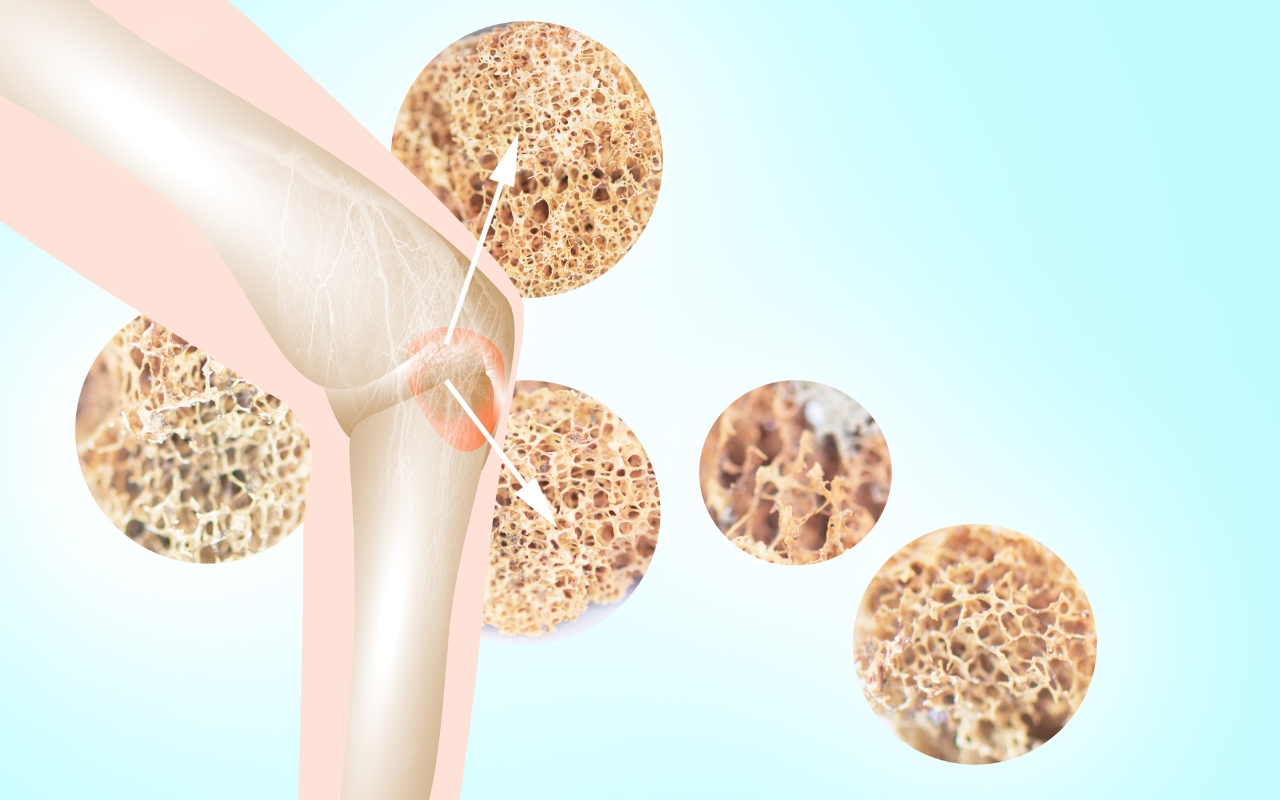Bone health is a critical aspect of overall well-being that often goes unconsidered until issues arise. With conditions such as osteoporosis and sarcopenia becoming prevalent as people age, it is crucial to understand the vital role that exercise plays in maintaining strong, healthy bones and preventing the debilitating consequences of these conditions. This article will delve into the benefits of exercise for bone health, the best exercises for building and maintaining bone density, and recommendations for different age groups to keep bones robust throughout life.
Understanding the Importance of Bone Health
As people age, their risk of developing osteoporosis rises significantly. Osteoporosis is a disease characterized by weakened and brittle bones, which increases the likelihood of fractures, even from minor falls or bumps. Similarly, sarcopenia, the loss of muscle mass and strength, often accompanies aging and exacerbates the risk of fractures due to impaired balance and mobility.
Exercise is a cornerstone in the prevention and management of these conditions. It plays several key roles, including building and maintaining bone density, enhancing muscle strength, improving balance, and reducing the risk of falls and fractures. The benefits of exercise extend to children, who are in the crucial phase of developing peak bone mass, and adults, who need to maintain bone strength as they age.
The Science Behind Exercise and Bone Health
Bones are living tissues that constantly undergo remodeling, where old bone is replaced by new bone. Various factors, including nutrition, hormones, and physical activity, influence this process. Weight-bearing and resistance exercises stimulate bone formation by creating stress on bones, encouraging bone-forming cells (osteoblasts) to increase bone density.
Moreover, exercises that improve muscle strength help stabilize joints and improve balance, thereby reducing the incidence of falls—a major cause of fractures in older adults. Incorporating various exercises to target different muscle groups and bone regions is essential, promoting overall skeletal strength.
Best Exercises for Bone Health
Weight-Bearing Exercises
Weight-bearing exercises involve moving against gravity while staying upright. They force your bones and muscles to work harder to support your body weight, which strengthens them.
- Brisk Walking: Walking 3 to 4 miles per hour is a simple yet effective way to improve bone health. It's accessible and can be easily incorporated into your daily routine.
- Running or Jogging: These activities increase the force exerted on bones compared to walking, stimulating more significant bone formation.
- Racket Sports: Games like tennis, badminton, ping-pong, and pickleball not only provide a fun way to exercise but also improve bone strength through rapid movements and directional changes.
- Stair Climbing: Whether at home or using a stair machine at the gym, stair climbing is a fantastic way to engage the lower body muscles and improve bone density.
- Dancing: Enjoyable and dynamic, dancing involves various movements that can enhance bone strength and coordination.
Resistance Training
Resistance or strength training involves exercises that make muscles work against an external resistance. This type of training is vital for strengthening both muscles and bones.
- Weight Machines and Free Weights: Squats, bench presses, and deadlifts performed using machines or free weights (like dumbbells) target major muscle groups and stress the bones.
- Resistance Bands: These flexible bands add resistance to your movements, which can help build strength and improve bone density.
- Body-weight exercises: Exercises such as pushups, pull-ups, squats, and lunges use your body weight to build strength and enhance bone health.
Balance Training
Maintaining balance is crucial, especially for older adults, to prevent falls and fractures. Balance training exercises can significantly improve stability.
- Tai Chi: This ancient Chinese practice involves slow, controlled movements that improve balance and coordination.
- Walking on Unstable Surfaces: Tools like foam mats or wobble boards challenge your balance and strengthen stabilizing muscles.
- Step-Ups and Lunges: These exercises improve leg strength and balance, making everyday activities safer.
- Shifting Body Weight: Standing on one foot or shifting weight from one leg to another enhances balance and proprioception.
Flexibility Exercises
Flexibility exercises are essential for maintaining a full range of joint motion and preventing injuries. Stretching exercises should be done after muscles are warmed up, such as at the end of an exercise session.
- Gentle Stretching: Perform stretches slowly and avoid bouncing to reduce the risk of injury.
- Avoid Spine Flexion: Exercises requiring bending the spine or waist should be approached cautiously to prevent strain, especially in osteoporosis patients.
Exercise Recommendations by Age Group
For Children and Teens
Building strong bones during childhood and adolescence prevents osteoporosis later in life. The skeleton grows rapidly during this time, and exercise plays a significant role in achieving peak bone mass.
- Daily Activity: Children and teens should aim for at least one hour of physical activity each day, with a mix of moderate to vigorous-intensity exercises.
- Bone-Strengthening Activities: Activities like jumping, running, and sports should be included at least 3 days a week to promote bone health.
- Muscle-Strengthening Exercises: Incorporate exercises like pushups or climbing that build muscle strength at least 3 days a week.
For Adults
Maintaining bone density and muscle mass becomes increasingly important with age. Regular exercise can help prevent bone loss and keep muscles strong.
- Weekly Activity: Adults should aim for at least 150 minutes of moderate-intensity exercise or 75 minutes of vigorous-intensity exercise each week.
- Strength Training: Include muscle-strengthening activities of at least moderate intensity at least twice weekly.
- Variety: A combination of weight-bearing, resistance, and balance exercises provides comprehensive benefits for bone health.
For Older Adults
Exercise remains essential in older age to preserve bone health, maintain independence, and reduce the risk of falls.
- Mix of Activities: Older adults should strive to combine aerobic, muscle-strengthening, and balance exercises each week.
- Adaptability: If unable to meet the recommended guidelines, they should remain as physically active as possible within their abilities.
- Consultation: It’s advisable to consult healthcare providers before starting new exercise routines, particularly if they have existing conditions like osteoporosis.
Additional Considerations for Safe Exercise
For individuals with osteoporosis or other physical limitations, it is crucial to tailor exercise programs to their capabilities. Consulting a healthcare provider, physical therapist, or personal trainer with experience in working with osteoporotic patients can ensure that exercises are performed safely and effectively.
- Proper Form and Technique: Ensure correct form and technique to minimize the risk of injury and maximize the benefits of each exercise.
- Gradual Progression: Start slowly and gradually increase the intensity and duration of exercises to build strength and endurance safely.
- Listening to Your Body: Pay attention to pain or discomfort and modify exercises to avoid exacerbating issues.
Nutritional Support for Bone Health
While exercise is paramount for bone health, nutrition also plays an essential role. A diet rich in calcium and vitamin D supports bone formation and maintenance.
- Calcium-Rich Foods: Dairy products, leafy greens, and fortified foods are excellent sources of calcium.
- Vitamin D: Sun exposure, fortified foods, and supplements can help maintain adequate vitamin D levels, which are crucial for calcium absorption.
- Balanced Diet: A diet with plenty of fruits, vegetables, lean proteins, and whole grains supports overall health and bone integrity.
Conclusion
Exercise is an indispensable component of maintaining bone health across all ages. From childhood to older adulthood, engaging in various weight-bearing, resistance, balance, and flexibility exercises can significantly strengthen bones, enhance muscle mass, improve balance, and reduce the risk of fractures. Alongside a nutritious diet, regular physical activity ensures that bones remain strong and healthy, enabling individuals to lead active, independent lives well into old age.
For more detailed information and guidance on bone health and exercise, consider visiting NIAMS and Mayo Clinic. These resources provide comprehensive insights and recommendations to support your journey toward optimal bone health.









